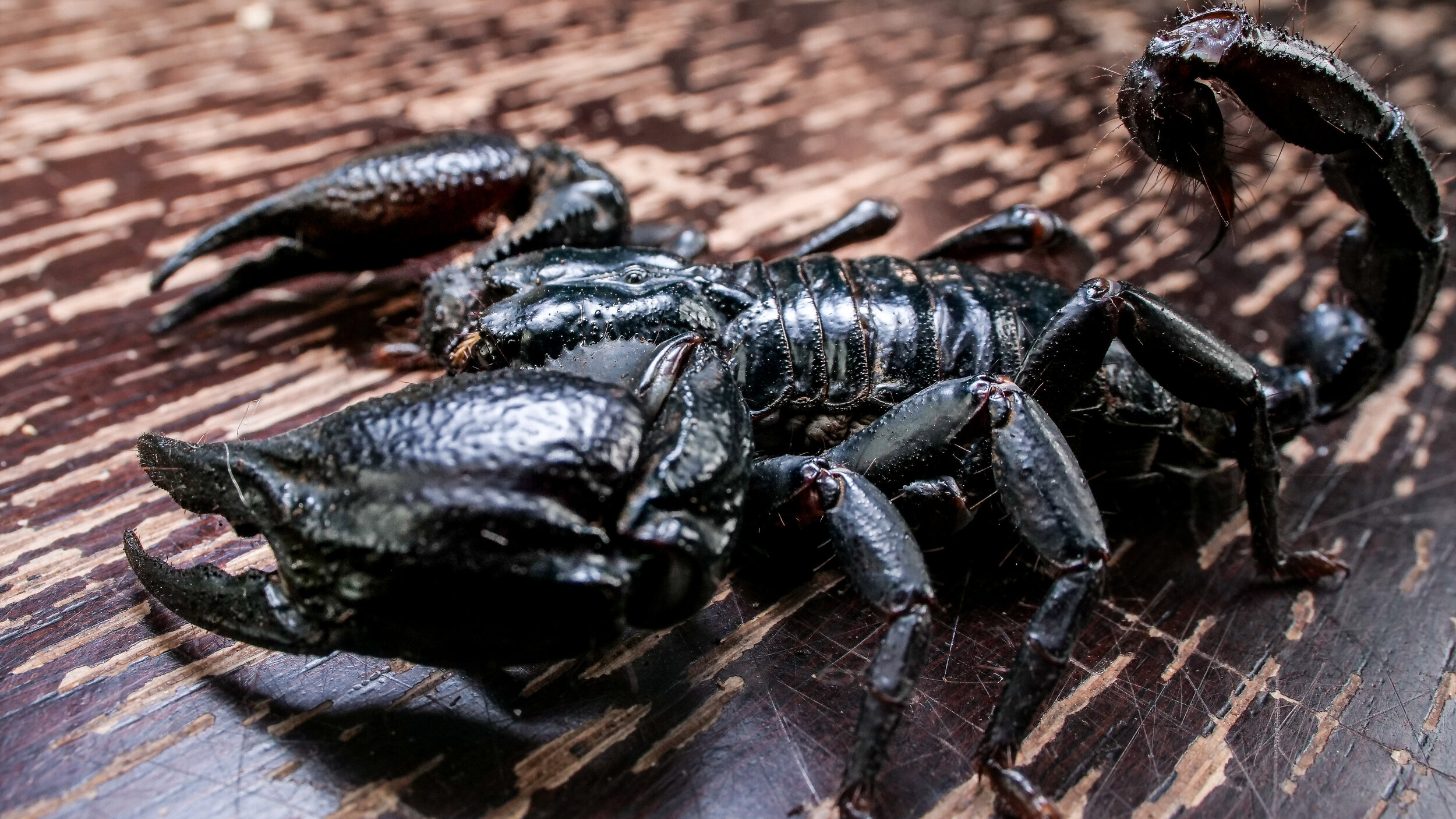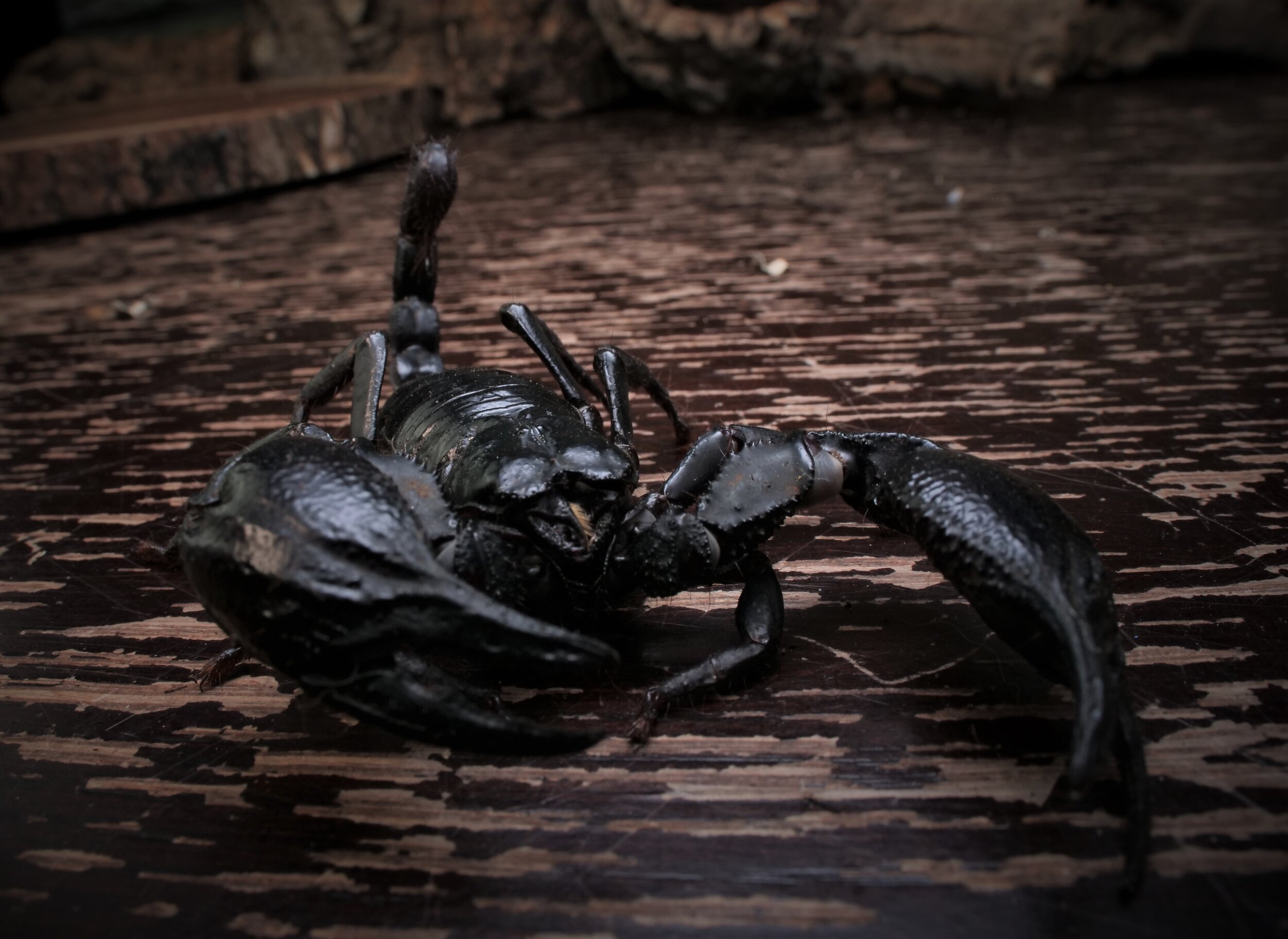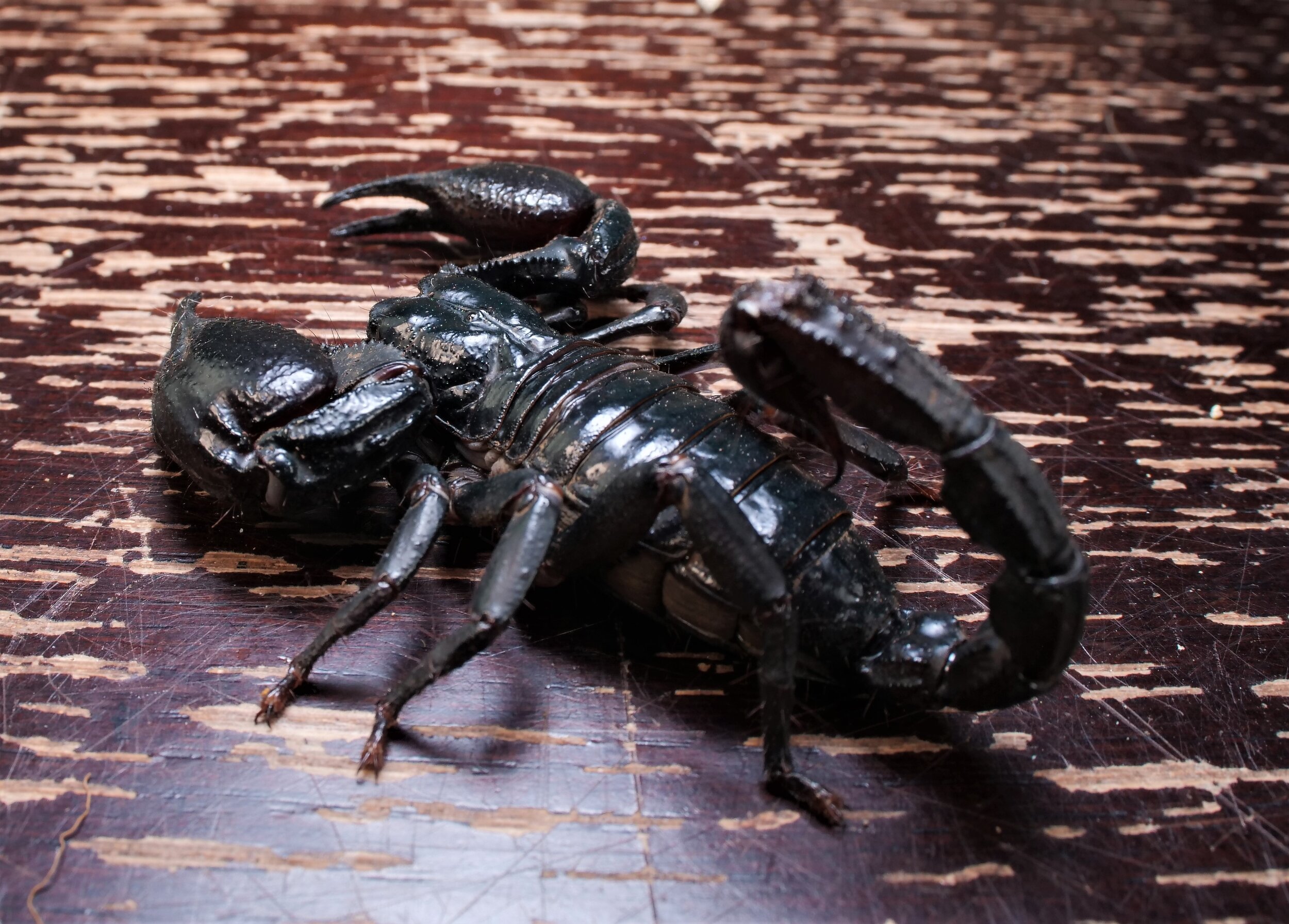Asian Forest Scorpion
(Heterometrus species)
Care Sheet
Care & Husbandry Video
In this video I tell you all about how I care for, set up, and feed my Asian Forest Scorpion. Whether you have a Heterometrus spinifer, Heterometrus petersii, Heterometrus silenus or Heterometrus longimanus...the care and husbandry for this scorpion is identical.
Scientific Name: Heterometrus silenus
Common Name: Asian Forest Scorpion
Type: Terrestrial
Endemic Location: India, Malaysia and Indonesia
Size: 5 inches
Growth Rate: Medium
Life Expectancy: 7-8 years
Recommended Experience Level: Beginner
Venom: Low Potency not typically harmful to humans unless there is an allergy.
Heterometrus silenus, also known as the Asian Forest Scorpion or the Malaysian Black Scorpion, is a terrestrial, tropical scorpion that is native to India, Malaysia and Indonesia. This species of scorpion loves to burrow deep and hide out during the day. Also, unlike some other popular scorpions in the hobby, this species does not do well on sand and needs a more humid environment. There are a few other popular species you may find being sold in the hobby under the same common name Asian Forest Scorpion: Heterometrus spinifer and Heterometrus petersii with the H. silenus seeming to be the most commonly found in the hobby. To complicate things further, these species are often mislabeled or misidentified and sold in the hobby as Emperor Scorpions, but the Asian Forest is more defensive than the Emperor. Also, the Asian Forest has a black telson (stinger) whereas the Emperor has an amber/yellow telson. The Emperor also has larger chela (claws) in proportion to its body and their claws are very bumpy and have a granulated texture to them whereas the Asian Forests claws are more smooth. The Emperor scorpion is from Africa, tends to burrow more and is seemingly more docile than the Asian Forest scorpion. I wouldn't describe the Asian Forest as aggressive or even defensive, but they do seem a little more apt to try and pinch you or even use their stinger when they are very annoyed. But even if you were to be stung, their venom is not known to be medically significant.
It is possible to keep this species communally if you give them plenty of room and multiple hides as some people have had success. Generally though, it is not considered a good idea and a little risky due to their territorial and defensive behaviors. It isn't so much that they are naturally communal, but possibly just tolerate living in close quarters with other specimens in ideal circumstances. Personally, I do not keep this species communally at this time, they each have their own enclosure.
I keep my Asian forest scorpions in a 10 gallon aquarium filled up a little over halfway with substrate. You can use a 50/50 mixture of peat moss and organic top soil and throw in a few handfuls of sand for a cheap and effective substrate. Sometimes I also use jungle mix or creature soil if I just want something that is quick and premade. I get the substrate damp, but not soaked. You want the substrate to be damp enough that you can squeeze it in your fist and not have water seep out of it. I put 2 hides on either side of the enclosure and spread peat moss and dried leaves across the top of the enclosure. I also provide a wide and shallow water dish. Scorpions can get stuck in a deep water dish and can drown, so it is important to provide them with a shallow dish they can easily crawl out of. I place a heat mat on one side of the enclosure on the actual side of the glass, not underneath the enclosure. These scorpions will burrow down to escape light and heat and if the heat pad is on the bottom of the enclosure, the more they dig down to find a cooler environment, the warmer they will become and this can become fatal. Putting the pad on the side of the enclosure helps give them a temperature gradient across the enclosure so they can better find a comfortable spot. It is important to also use a thermostat that your heater is plugged into to help moderate the temperature and keep it in the desired range and not get too hot. This can also help minimize any danger of the heating pad overheating and catching on fire. I keep one side of the enclosure damp by gently watering the substrate on that third of the enclosure once or twice a week and not letting it dry out. I also put a bunch of sphagnum moss on that side of the enclosure to help keep the humidity up. The other side I let dry out and only water it down maybe once every 4- weeks, but not too much. If you keep your enclosure in a room that is at or above 72f, there really is no need to use any additional heat source and many keepers have kept their scorpions alive and healthy for many years with no need for heat pads.
As far as feeding, I give my Asian Forest scorpions 3 large crickets every week or two but base the frequency on their size. If they are looking thin, I will feed them more often and if they are starting to look very plump, I will feed them less often. I don’t feed more than a few crickets at a time so I can be sure that the scorpion actually ate them and the crickets didn't just die off. It is important to spot clean the enclosure a day or two after feeding and remove any uneaten prey as they can attract mold and mites since the enclosure is on the humid side. You can also set this species up in a bioactive enclosure where the isopods, like springtails, will break down any uneaten prey before mites or mold can develop.
Overall this is a fairly simple scorpion to take care of, they grow to a nice large size and can be seen wandering around their enclosures at night. Very rarely do I ever see my scorpions out during the day, but occasionally it can happen. Just make sure you give them plenty of substrate to burrow and keep the substrate slightly damp. I prefer using the BioDude terra arena substrate as it holds moisture and shape well and helps support a bioactive environment. I have a link down in the description where you can get $10 off your order if you want to try it out. Jungle mix and creature soil seem to work very well also. You can even just use a mix of peat moss and potting soil that has no fertilizers or other chemicals. I just wouldn't recommend straight coco fiber as I have not had much luck using that substrate with this scorpion. The coco fiber seems to dry out too quickly, not hold its shape and burrows are prone to collapse, or if the substrate gets a little too damp, mushrooms can start to take over. This is a fascinating and readily available species in the hobby and will make an amazon addition to your collection. If you have never kept a scorpion before but are interested in getting your start in that aspect of the hobby, this is one of the species I can highly suggest for beginners.













